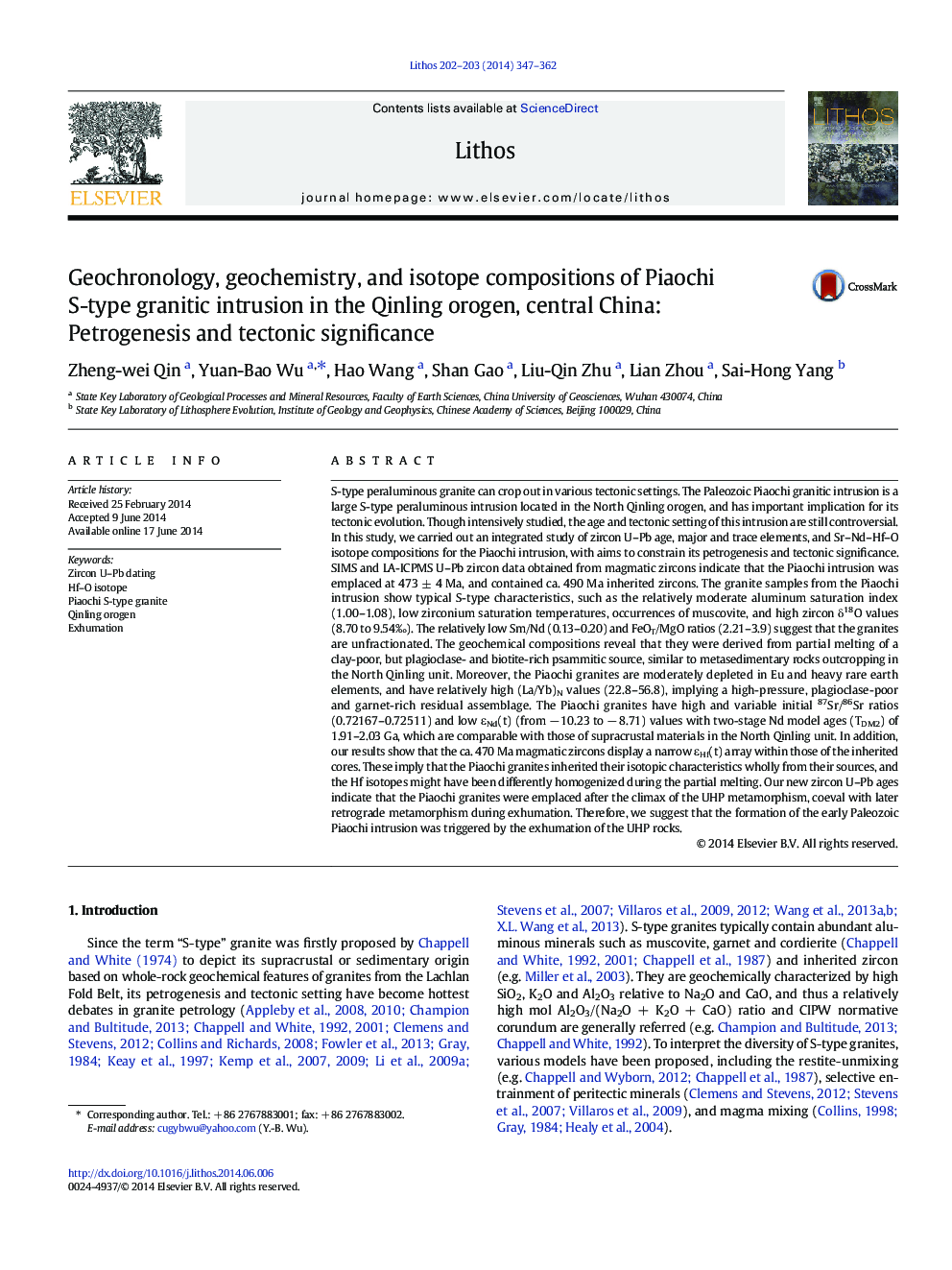| کد مقاله | کد نشریه | سال انتشار | مقاله انگلیسی | نسخه تمام متن |
|---|---|---|---|---|
| 4715889 | 1638675 | 2014 | 16 صفحه PDF | دانلود رایگان |

• The granites of the Piaochi intrusion are unfractionated S-type granites.
• The Piaochi granites were formed at 473 ± 4 Ma.
• Geochemical compositions imply an entirely crustal origin for the Piaochi granites.
• They were formed during the exhumation of the UHP metamorphic rocks.
S-type peraluminous granite can crop out in various tectonic settings. The Paleozoic Piaochi granitic intrusion is a large S-type peraluminous intrusion located in the North Qinling orogen, and has important implication for its tectonic evolution. Though intensively studied, the age and tectonic setting of this intrusion are still controversial. In this study, we carried out an integrated study of zircon U–Pb age, major and trace elements, and Sr–Nd–Hf–O isotope compositions for the Piaochi intrusion, with aims to constrain its petrogenesis and tectonic significance. SIMS and LA-ICPMS U–Pb zircon data obtained from magmatic zircons indicate that the Piaochi intrusion was emplaced at 473 ± 4 Ma, and contained ca. 490 Ma inherited zircons. The granite samples from the Piaochi intrusion show typical S-type characteristics, such as the relatively moderate aluminum saturation index (1.00–1.08), low zirconium saturation temperatures, occurrences of muscovite, and high zircon δ18O values (8.70 to 9.54‰). The relatively low Sm/Nd (0.13–0.20) and FeOT/MgO ratios (2.21–3.9) suggest that the granites are unfractionated. The geochemical compositions reveal that they were derived from partial melting of a clay-poor, but plagioclase- and biotite-rich psammitic source, similar to metasedimentary rocks outcropping in the North Qinling unit. Moreover, the Piaochi granites are moderately depleted in Eu and heavy rare earth elements, and have relatively high (La/Yb)N values (22.8–56.8), implying a high-pressure, plagioclase-poor and garnet-rich residual assemblage. The Piaochi granites have high and variable initial 87Sr/86Sr ratios (0.72167–0.72511) and low εNd(t) (from − 10.23 to − 8.71) values with two-stage Nd model ages (TDM2) of 1.91–2.03 Ga, which are comparable with those of supracrustal materials in the North Qinling unit. In addition, our results show that the ca. 470 Ma magmatic zircons display a narrow εHf(t) array within those of the inherited cores. These imply that the Piaochi granites inherited their isotopic characteristics wholly from their sources, and the Hf isotopes might have been differently homogenized during the partial melting. Our new zircon U–Pb ages indicate that the Piaochi granites were emplaced after the climax of the UHP metamorphism, coeval with later retrograde metamorphism during exhumation. Therefore, we suggest that the formation of the early Paleozoic Piaochi intrusion was triggered by the exhumation of the UHP rocks.
Journal: Lithos - Volumes 202–203, August 2014, Pages 347–362